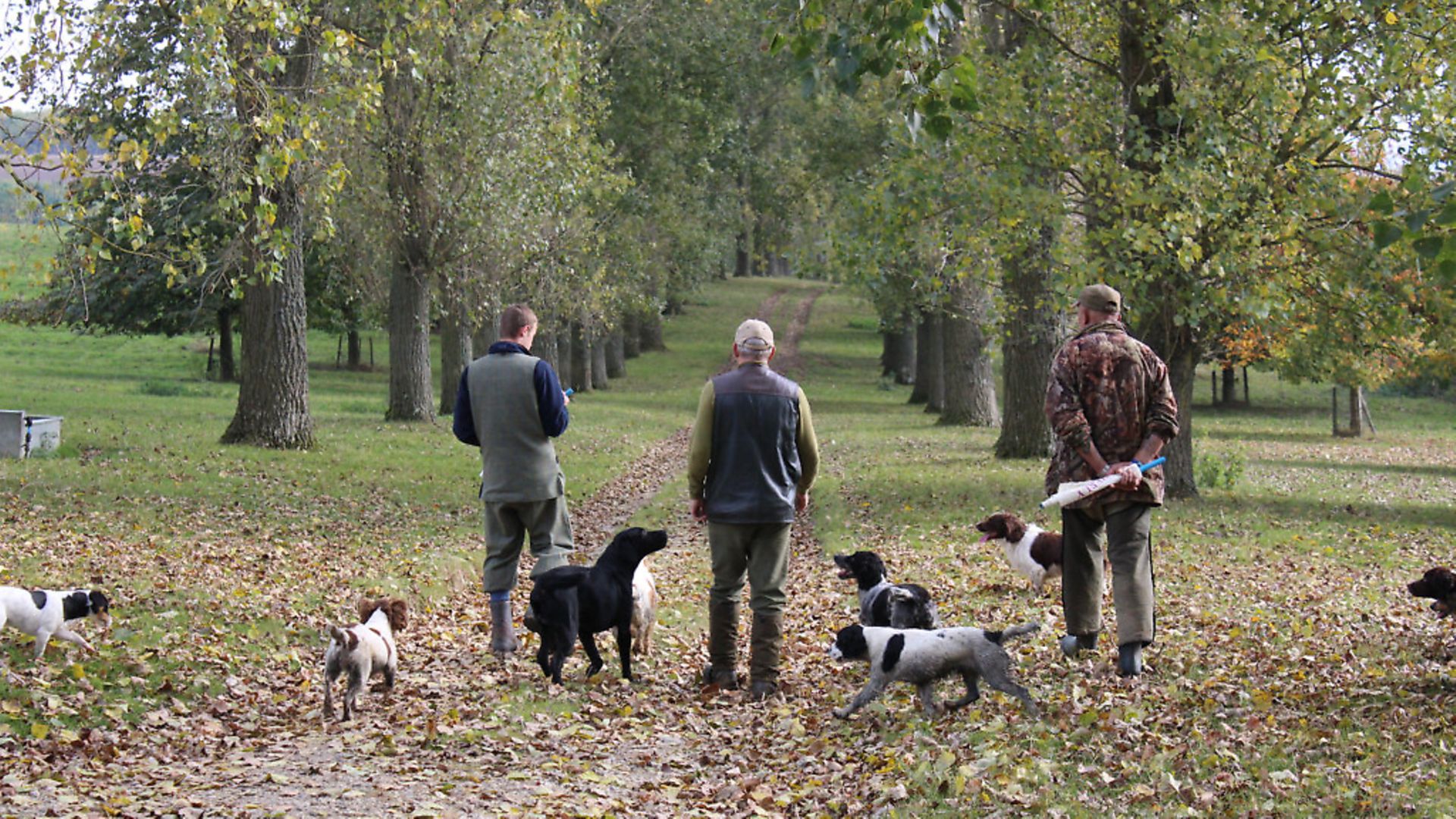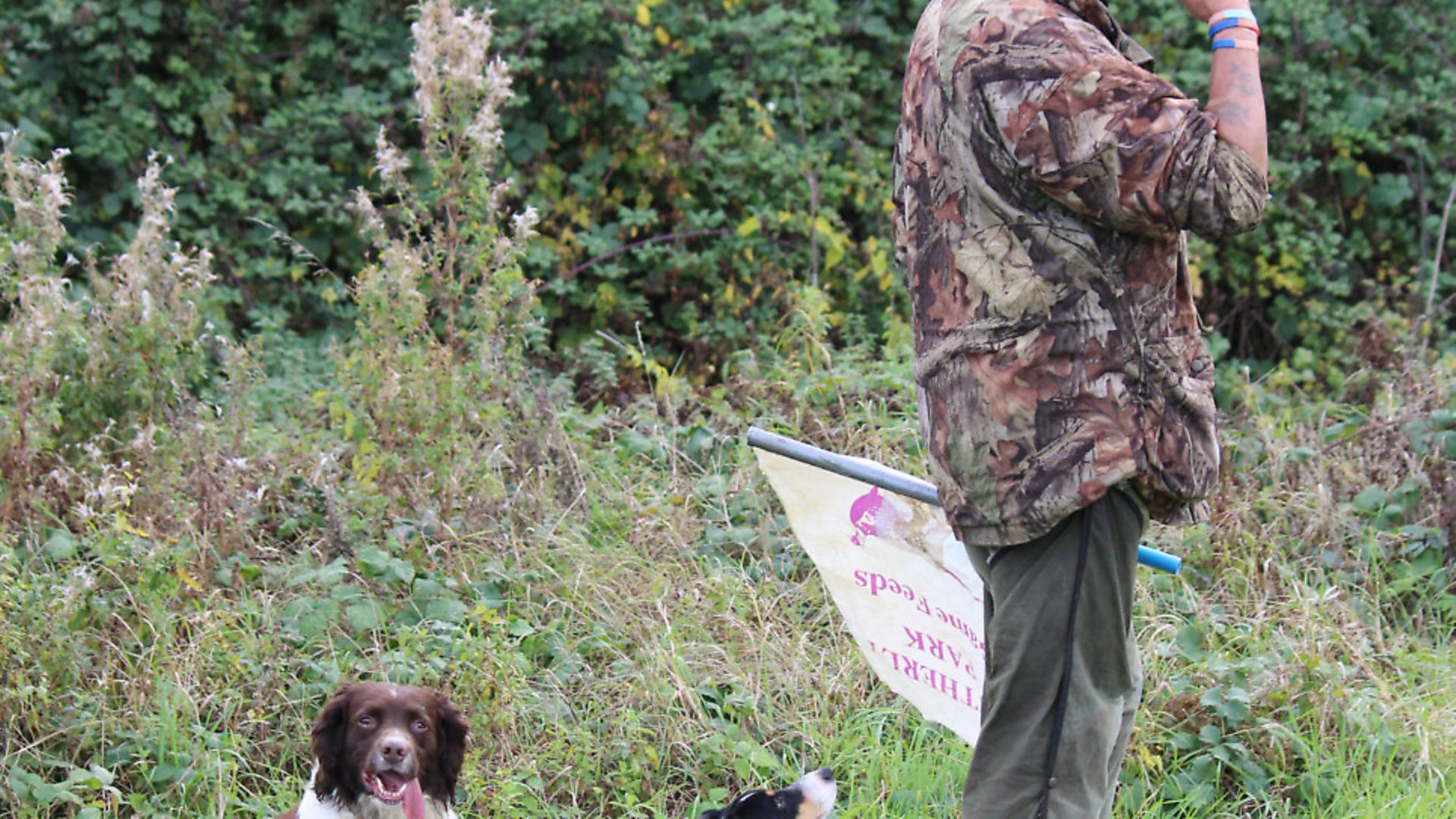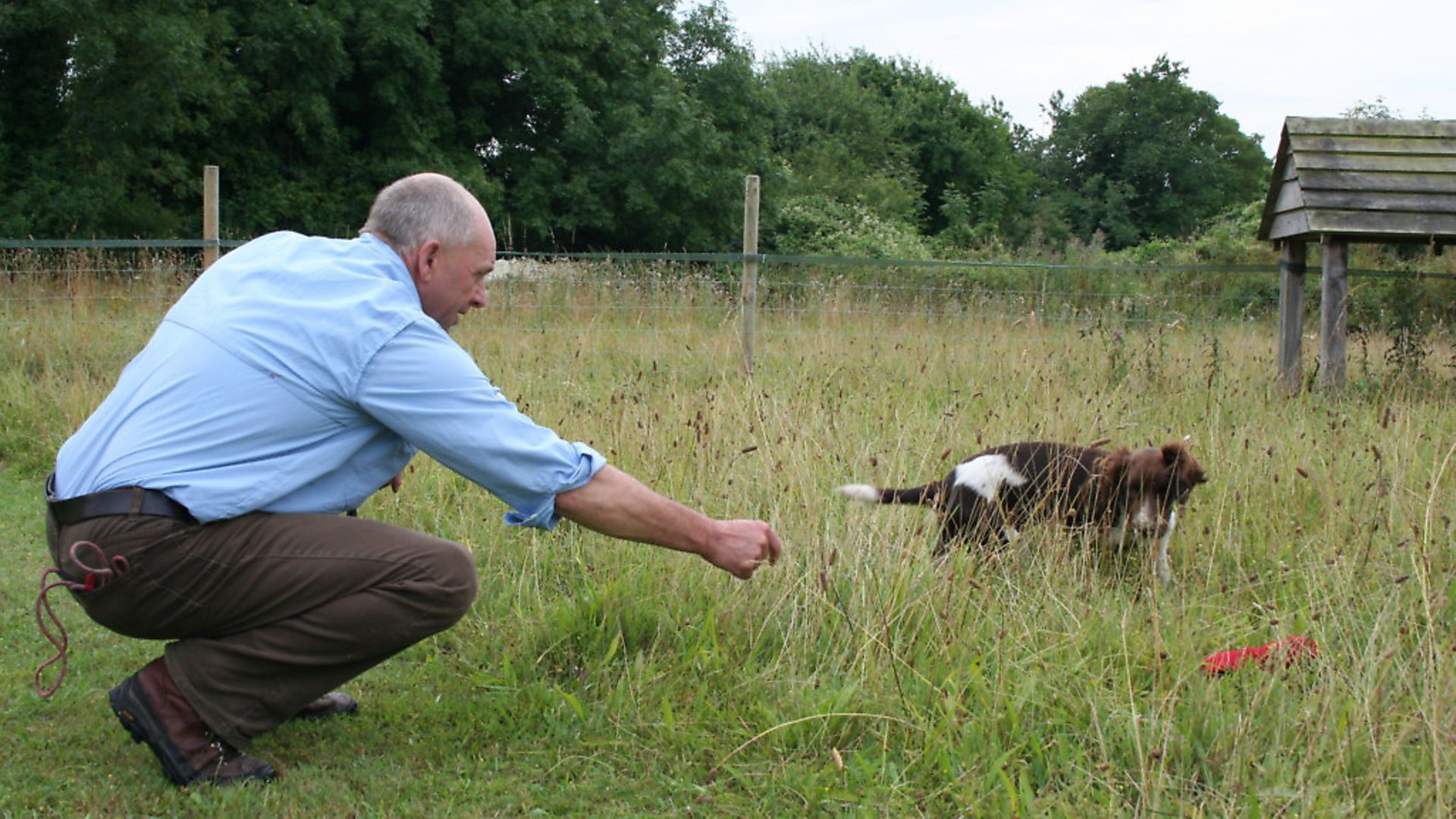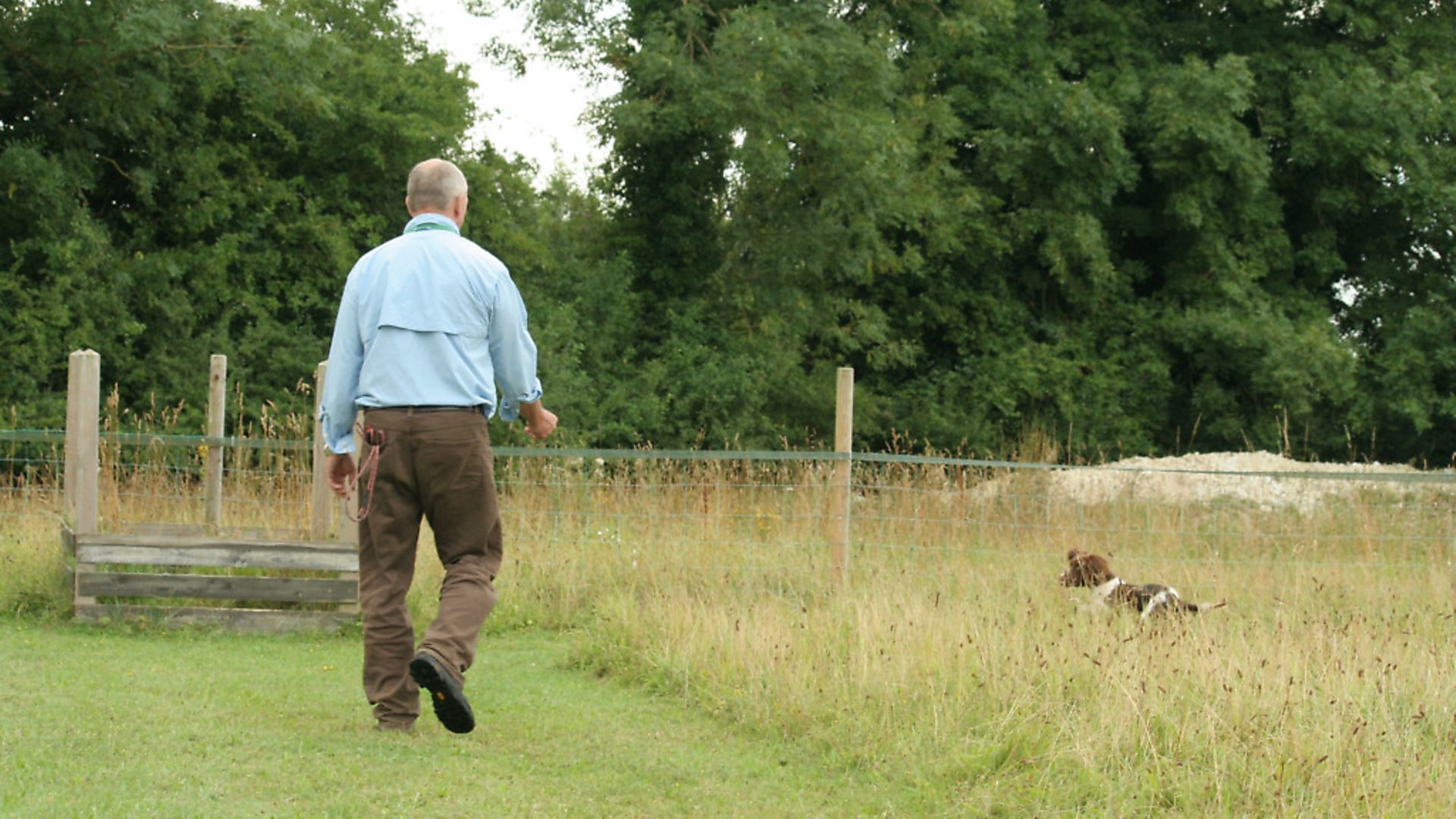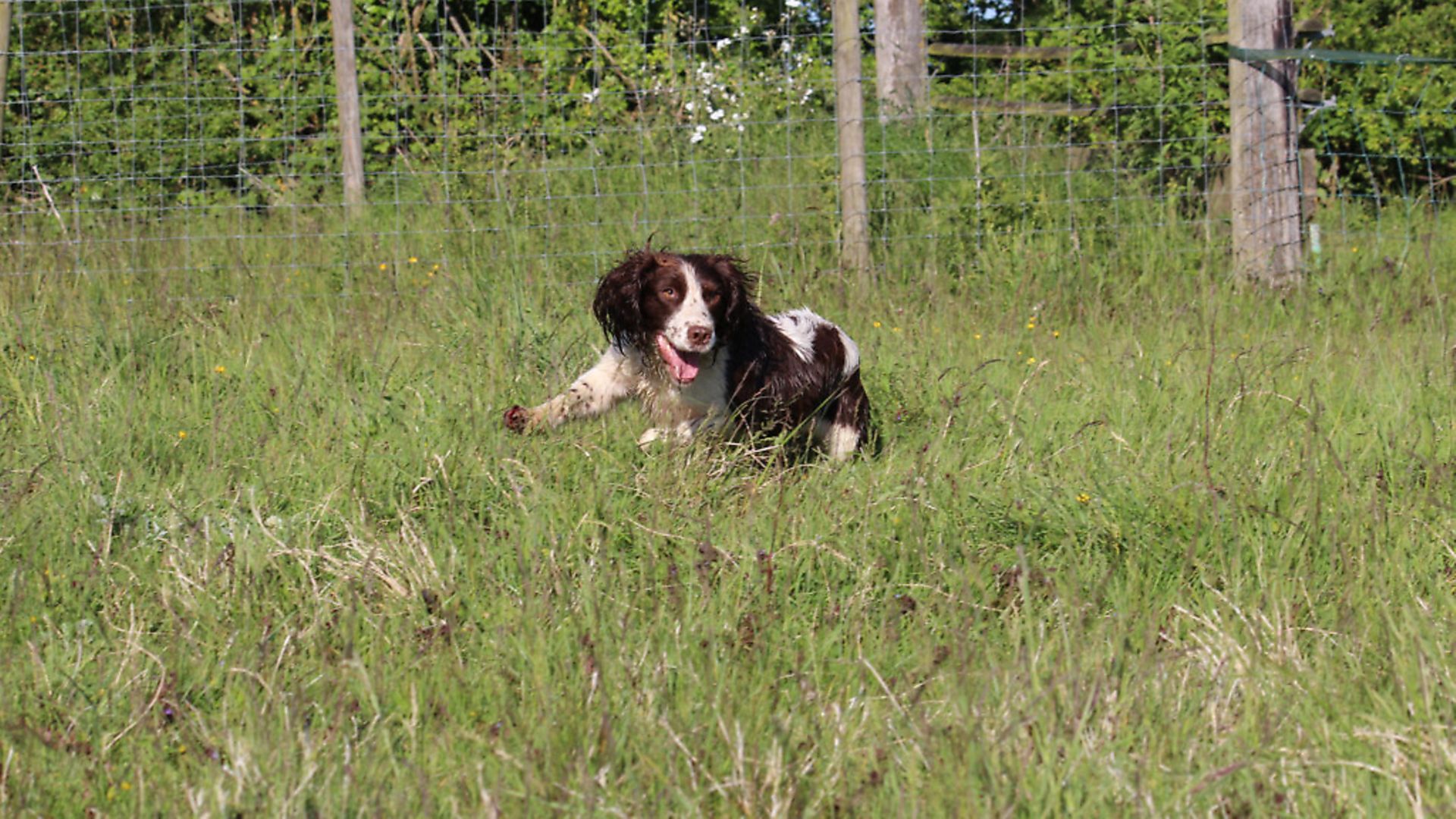Train your gundog to be a better beating dog
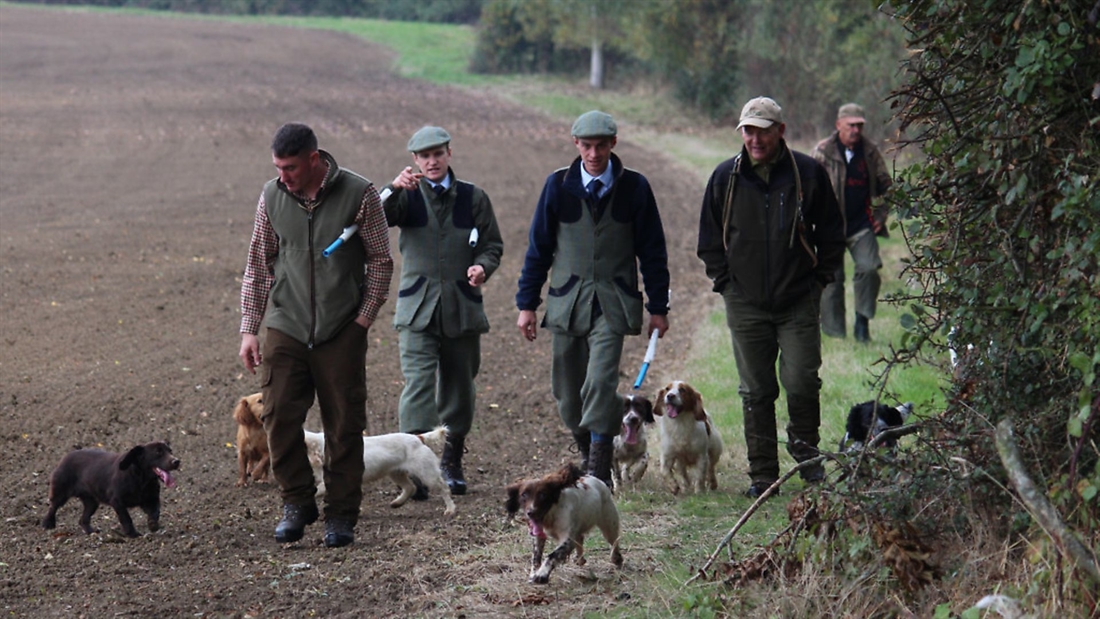
If you’re going to take your gundog beating this seaosn, this training advice from Howard Kirby should ensure he stays under control and doesn’t ruin your day!
Going beating is probably most people’s first introduction to the shooting field, and what a fantastic experience it can be. If you are able to take a dog along with you then this will almost certainly enhance your experience… right? Not necessarily! Dogs that work under control in the beating line are a real asset to shoot days but if one should get out of control while ‘in the line’ then things can be very stressful to say the least.
Many keepers choose not to have dogs in the line as it eliminates the risk that they bring to a shoot day. The keeper has many variables to contend with on a shoot day; a dog running amok could seriously ruin a day’s shooting.
For most of us, a day spent beating or picking-up is something we do for leisure, but the keeper’s whole reputation, income and personal pride is at stake each time they line out their Guns. And for those reasons alone we need to be sure that we, as dog handlers, do everything possible to ensure that both ourselves and our canine companions are thoroughly prepared for what we are about to do.
SPANIELS
Most beaters will choose a spaniel. Why? Because they’re bred for the job. Spaniels will work heavy cover with a zest and tireless enthusiasm that no other breed can match. That said, pretty much any breed can find its ‘inner wolf’ and become an excellent line dog. In fact, in many cases alternative breeds can be much easier to manage simply because they don’t bring the same amount of ‘fierce’ to the job. A quiet, easy-going dog that ‘tootles around’, prodding birds out of cover can be a delight to be in the line with.
In this article I’m going to assume that your choice of workmate is a spaniel, but pretty much most of what we discuss could be applied to other breeds.
LEARNING BY ASSOCIATION
Let’s start from the beginning. Encourage that puppy to stay close to you by ensuring that they think all the good things in life come either from or around you. Here at Mullenscote we choose to teach all of our youngsters to understand basic commands using food, dummies and affection; there’s nothing unique about that as it’s pretty much what all dog trainers work with.
Basic obedience – come, sit, stay, watch me, heel – can be started from the moment the puppy arrives. If you can coordinate everything at once, start using your whistle for recall and sit as well. These little pups are as bright as buttons and will very quickly learn to respond to a whistle noise that they associate with a reward. Quietly clap your hands, make squeaking noises, and as they turn and move towards you say their name and use the whistle: ‘Fido… peep, peep, peep, peep.’ As they arrive offer them a feed treat as reward.
It’s important that the puppy only hears the command words or whistle as he is moving towards you. He’s learning by association that the specific actions he chooses to offer will bring him rewards. We need for the puppy to hear his name and the whistle as he’s moving towards you. In no time at all, when he hears those sounds it will trigger that behaviour… for those of you that aren’t keeping up, in this instance, the recall.
Hunting is what spaniels and line dogs are all about, and for those of you that either work around or have access to game you can start a youngster hunting for rabbits or birds from the outset. Keepers in particular can, and often do, produce the very, very best of driving dogs by getting their youngsters out when they’re around birds and teaching them that they can find and flush, but under no circumstances are they allowed to catch (peg) game. If you get an opportunity to watch a dog that has been trained to this standard I’d advise you to take the time to watch and learn. The dog will just buzz around the keeper, flushing and driving birds forwards. For most of us this will not be possible because of our lack of access to game and the skill and experience required to train a dog using these techniques.
So, for the mere mortals among us the process will be different. We will need to drop dummies or tennis balls around us and encourage the puppy to hunt for them. I’m hoping that you will already be able to see a stark contrast between the keeper’s training method and the one that we’re using. If not, just take a moment and have a think about it. Here’s a clue: there’s a conflict in interest and a considerable difference in hunting for and retrieving the ball, and what the keeper teaches his puppy. Have you got it yet?
Primarily, the keeper is teaching his ‘specialist line dog’ that it mustn’t catch what it’s hunting for. If they train the dog properly it will be very reliable in the line and will never peg game. Using the ‘find the dummy’ technique encourages the puppy to find and catch… So, are we not ‘training in’ a problem?
Don’t panic. Training a dog is a layering-up process and we are going to initiate one behaviour before adding or encouraging another. As training progresses we will show the puppy that once he has hunted and found his prey that he’s not to pick it unless we tell him to. Are you confused now? Don’t worry, I can see how this could make the way forwards more difficult to understand.
In a relatively short article like this it’s just not possible to talk through every intricate aspect of training, but for the ‘hunt and find the dummy’ exercise to be successful you will need to ensure that the puppy will return and deliver to hand once he locates the dummy. This retrieving work is normally best done before you start hunting, particularly if your spaniel is going to be multi-purpose in his role in the shooting field.
Our first hunting objective is to create drive and enthusiasm for the game of ‘find the dummy’. Keep sessions short and sweet; ensure the puppy is hunting close. As the puppy and his drive develop you can start to move around, gently controlling the direction and area that he hunts in. Naturally, you will use your hands to direct, but be careful because we want the dog to keep most of his focus on the ground – if you waft your hands about too much you risk the dog focusing on you. There’s a balance to strike. Once he’s fully trained we want to just ‘click him off’ to start him hunting and then just let him quarter the ground in front of us with minimal direction.
Teaching the youngster to work a pattern is an important element of early training. Some will quarter naturally but most will need to be encouraged to hunt in a side-to-side pattern across the front of you. When appropriate, you would choose to hunt into the wind but this will not always be possible. If you are new to training hunting dogs I recommend that you do some research as there are some excellent diagrams that will help you to work a dog into varying wind and scenting conditions. If you are to be the best that you can be then a thorough understanding of this is an essential part of your gundog education.
In next month’s issue we’ll continue to look at developing the hunting skills of our dog, including use of the whistle, sitting to the whistle, flush and shot, and we’ll take a look at how we introduce live game to the process – loads of interesting stuff to come. In the meantime, keeeeeep training and enjoy your dogs!




